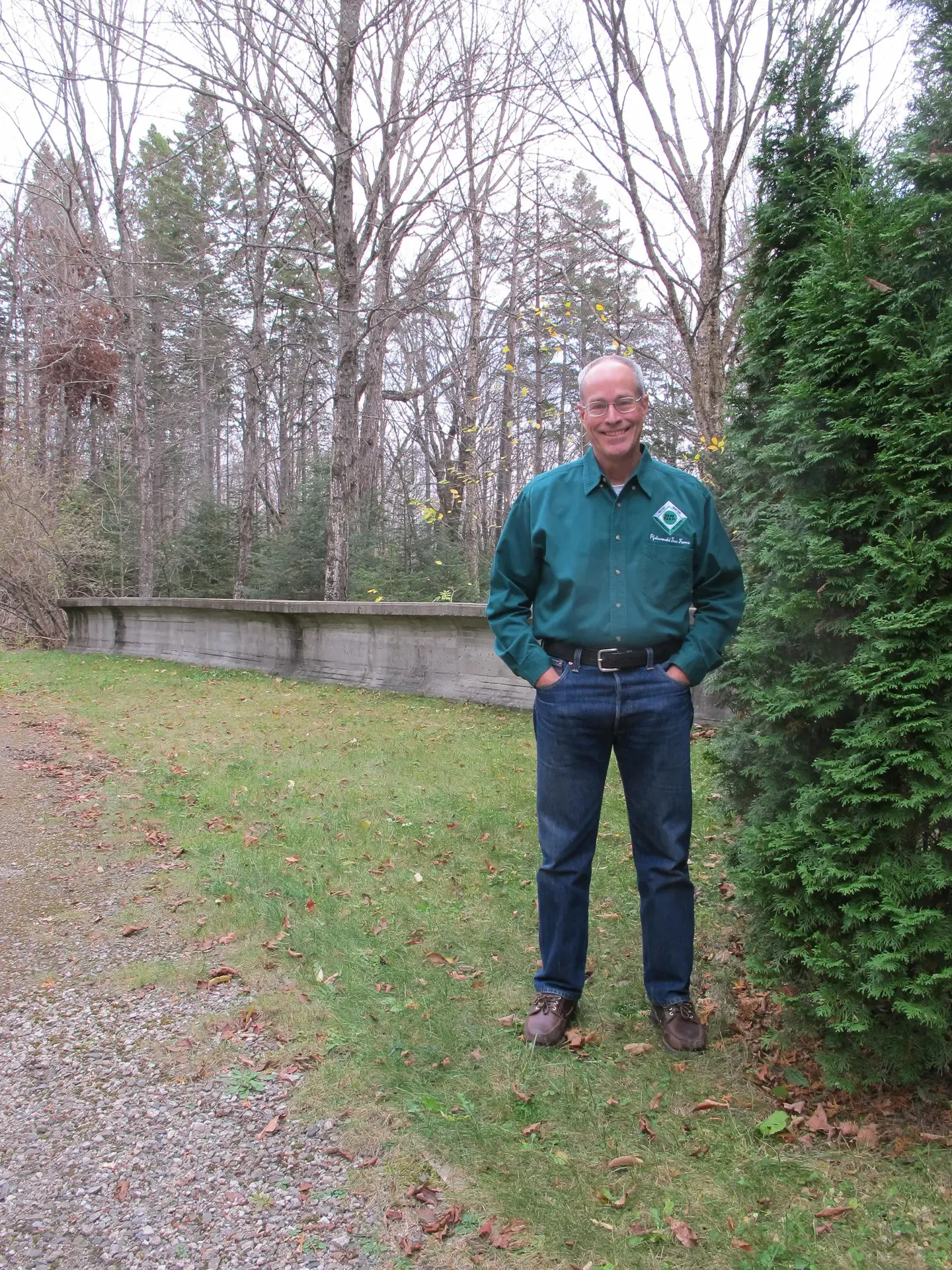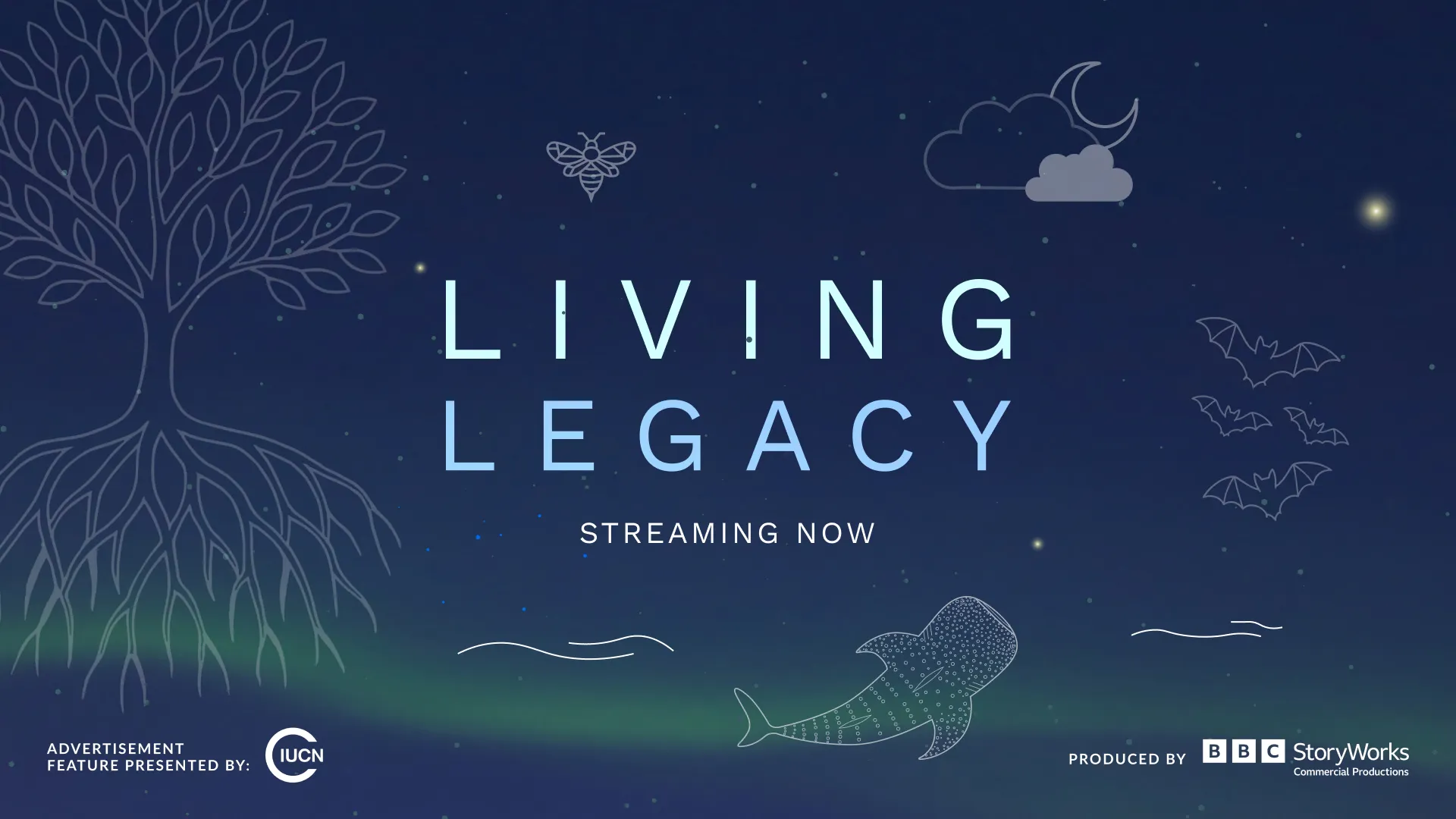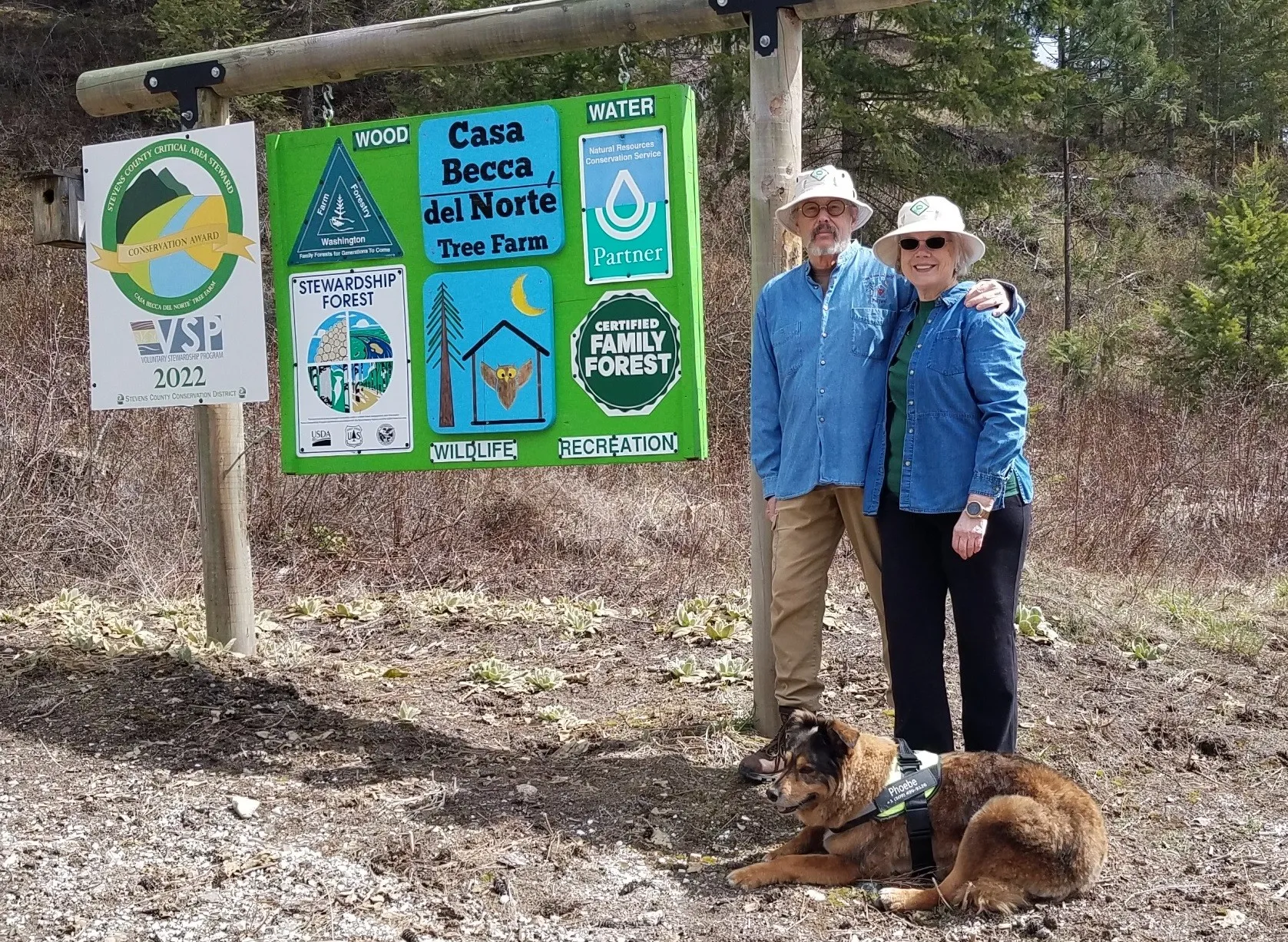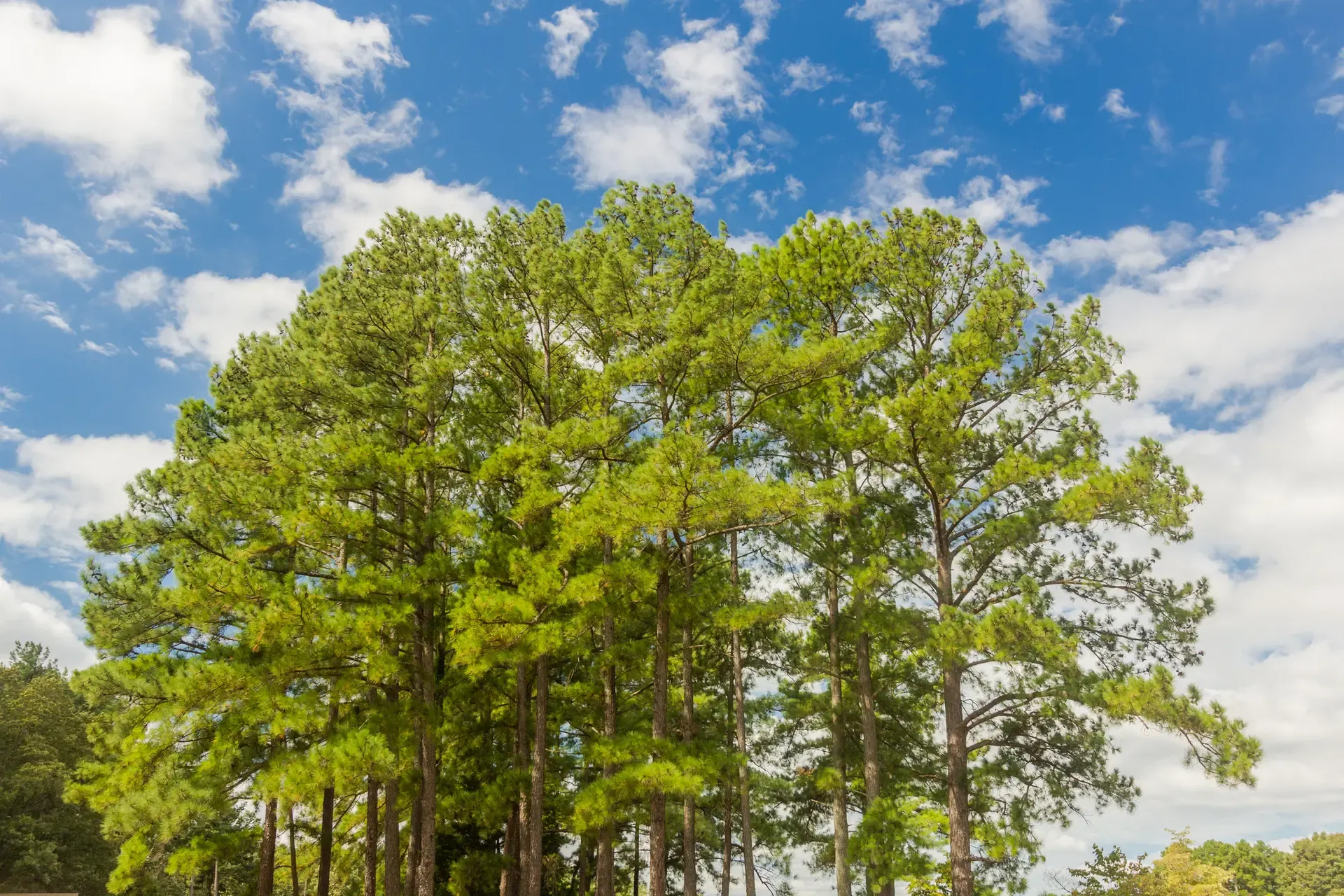Encouraging Lifelong Learnings
When a German word enters the parlance of our times, it tends to be memorable. Think of “fahrvergnügen,” which means the pleasure of driving, or “schadenfreude,” the satisfaction we sometimes derive from another person’s misfortune.
For Al Robertson, the German word that has stuck with him the most is “Dauerwald,” meaning permanent or perpetual, and as a certified Tree Farmer in the American Tree Farm System (ATFS), he lives that concept every day. Dauerwald refers to continuous-cover forestry (CCF), the practice of sustainably managing forests by selectively harvesting individual trees.

Al Robertson outside his 60-acre Acadian forest in Sheffield, Vermont.
CCF promotes the long-term health of forests by having them include trees of various sizes, species and ages, improving their biodiversity and resistance to invasive species. The goal is to give forest stands a physical structure that always stays irregularly shaped, which helps to keep them continuously productive from a timber standpoint. At the same time, the stands continue to provide wildlife habitat, cleaner air and water and recreational opportunities.
Robertson was introduced to Dauerwald, and to forestry in general, while serving as a construction engineer in the U.S. Army while stationed in Germany. Now retired, Robertson, 72, lives on his 60 acres of Acadian forestland in Sheffield, Vermont, and he’s proud that his Tree Farm has been certified by ATFS.
“I bring to my landownership the ethic that I learned about and appreciated in Germany – that of being a steward of the forest, a person who is responsible for the land but never owns it,” Robertson said. “Being someone who leaves the land in better shape than it was in and has an appreciation for all that forests do.
“And that explains why I think the Tree Farm program is so important. It’s like Ethics 101 for a landowner who wants to understand forestry, what that land can do for man and what it does for the world, and the Standards that AFF has in place promote that.”
Robertson was referring to the ATFS 2021 Standards of Sustainability, which were approved by AFF’s board of trustees last Nov. 11 and enacted Jan. 1. These eight standards serve as the basis of the ATFS certification program and replace the 2015-20 Standards of Sustainability. Adoption of the new standards will take place throughout 2021.
ATFS is a group of more than 70,000 family forest owners who are sustainably managing 18 million acres of forestland across the country. ATFS strives to enhance the quality of America’s woodlands by giving landowners the tools they need to keep their forests healthy and productive, resulting in benefits such as a cleaner environment, wildlife habitat, jobs and sustainably produced wood and paper products.
Periodic Review
Every five years, the ATFS Standards of Sustainability undergo review through a transparent process that ensures public input and new developments in forest management are included. The Standards may be revised to reflect changes in the Standards of the Programme for Endorsement of Forest Certification (PEFC), as well as emerging science and the ATFS’s learnings from implementing its program.
The PEFC is a leading global alliance of national forest certification systems. As an international non-profit, nongovernmental organization, it’s dedicated to promoting sustainable forest management through independent third-party certification.
The yearlong Standards-review process is done by an independent panel convened by the AFF board of trustees, with input from ATFS members. Angela Wells, Director of the ATFS, said the Standards are uniquely crafted for the capabilities and scale of family forest owners’ operations.
“Compliance with the Standards is accessible for landowners with properties in small-, medium- and large-size classes, those with limited economic means and those who choose commercial timber production as an income source, or not at all,” Wells said.
“Since the inception of our third-party forest-management certification program, we have managed to maintain rigor without introducing undue burden on family landowners,” she added. “Our ultimate goal is to make certification to internationally and independently recognized standards for sustainable forest management attainable for as many landowners as possible.”
When the Standards of Sustainability are revised, changes generally are minimal since so much effort and knowledge went into producing them in the first place. But five years is a long time, so small but significant changes may be warranted.
For landowners, the three most significant changes in the 2021 Standards involve continuing education, recordkeeping of pesticide usage and the ability of inspecting foresters to conduct remote visits. Two of the applicable Standards, Nos. 1 and 4, are summarized below:
Standard 1: Commitment to Practicing Sustainable Forestry:
Landowner demonstrates commitment to forest health and sustainability by developing a forest management plan, implementing sustainable practices and seeking opportunities to expand their knowledge and understanding of sustainable forest management.
The 2015-20 Standards asked landowners for a commitment to sustainable forestry but had no specific mention of landowner education. The new Standards highly encourages – but doesn’t require – landowners to seek out educational opportunities, including workshops, field days, advice from forestry professionals and online resources.
Standard 4: Air, Water and Soil Protection:
Forest management practices maintain or enhance the ecosystems and ecosystem services provided by the forest, including air, water, soil and site quality.
The 2015-20 Standards had no requirement for the landowner to maintain records of pesticide usage beyond what’s required by law or regulations. The new Standards requires ATFS-certified Tree Farmers to maintain records of all pesticide usage, including the acreage of the land affected and the type and amount of pesticide used.
Additional changes to ATFS protocols and procedures include a change in how landowner visits are conducted. The 2015-20 Standard required that all inspections involve a field visit, but the new Standard allows some inspections to be conducted remotely.
Remote inspections require a full review of management plan and documentation and may be enhanced by the use of technology such as remote change detection, review of spatial imagery, or drones.
From Novice to Expert
Robertson joked that when he bought his land in 1979, he didn’t know anything about forestry, so he just focused on building trails. Today, his property has about three miles of trails – some packed dirt, some corduroy and a main driveway made of cobblestone and gravel. On weekends and holidays over the years, he would build corduroy trails by placing layers of small or dead softwood saplings on the ground.
Robertson built a house on his property and now lives there full time, but he sometimes thinks about a time when he no longer will be alive to enjoy his land. He reflects on that German word that introduced him to forestry, Dauerwald, and about the importance of his forest’s long-term health.
Robertson’s Tree Farm is conserved through the Vermont Land Trust, so it will remain intact in perpetuity. Eventually, it will become the Robertson Memorial Town Forest and will be managed by a trust. It’s a community asset today, Sheffield’s very own town forest, where the public can go hiking, hunting or skiing, and Robertson is determined to keep it that way.
“My time in Germany really changed me,” he said. “I went to Germany without any thoughts about forestry, and when I left, I was extremely imbued with the forest ethic that the Germans have – a deep love of the forest and an understanding of how important it is to the Earth and to the society in Europe.
“We want to see more sustainable forestry practiced in the United States, and being a member of the Tree Farm program supports that,” he added. “The challenge has always been trying to get more landowners interested in Tree Farm. The fact is that in the United States, because of the incredible amount of land that we have, that land ethic never really took hold in the general population. That’s where Tree Farm comes in. We’re the people trying to instill that land ethic in the general population of the U.S., and that’s a tall order.”
This piece was originally published as part of a larger article in AFF's quarterly magazine, Woodland Magazine. You can read the full piece in the digital edition of the publication.
Related Articles

November 20, 2025
New Film Showcases Carbon Project’s Impact on Family Landowners and Nature
The American Forest Foundation (AFF), a national organization committed to empowering family forest owners to create meaningful conservation impact, announced today the release of a new film that tells the story of the Family Forest Carbon Program (FFCP) and its impact on people and the planet.

November 6, 2025
Meet the 2025 Outstanding Tree Farmers of the Western Region – Lynn and Becky Miner
Lynn and Becky Miner’s story is one of vision, perseverance, and transformation. When they first purchased their 100-acre property near Chewelah, Washington in 1992, it was far from the thriving, diverse forest it is today. They have poured their energy into turning “Casa Becca del Norte” (Becky’s House in the North) into a model Tree Farm, earning the recognition as 2025’s Outstanding Tree Farmers of the western region.

June 3, 2025
Why Wildlife Loves Loblolly—And How These Pines Can Benefit Your Land
A quiet stretch of pine trees can offer more than just scenery—it can provide vital habitat for wildlife across every season. Loblolly pine, the most common native tree species in the Southeast, plays a particularly important role in creating habitat for a wide variety of game and non-game species, from wild turkeys and rabbits to songbirds and squirrels.